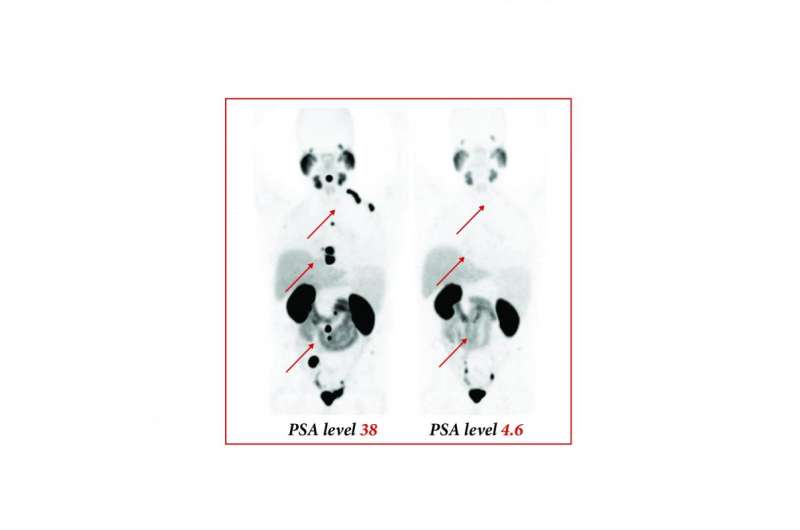SNMMI image of the year: Theranostic drug unites imaging and therapy for prostate cancer

A novel molecular imaging technology not only detects prostate cancer that has spread throughout the body, but also provides a potent and minimally invasive method of radiotherapy, reveal researchers at the 2015 Society of Nuclear Medicine and Molecular Imaging annual meeting.
Each year, SNMMI chooses an image that exemplifies the most promising advances in the field of nuclear medicine and molecular imaging. The state-of-the-art technologies captured in these images demonstrate the capacity to improve patient care by detecting disease, aiding diagnosis, improving clinical confidence and providing a means of selecting appropriate treatments.
The 2015 SNMMI Image of the Year goes to a team of researchers from the department of nuclear medicine at the University Hospital Heidelberg and the German Cancer Research Center in Heidelberg, Germany. The emerging technology portrays a theranostic drug called PSMA-617, a prostate-specific membrane antigen inhibitor that targets the enzyme on the surface of prostate cancer cells, even if they have spread, or metastasized, to other organs.
'We feel very honored to receive this prestigious award as it is the result of the excellent work of many people,' said Matthias Eder, Ph.D., co-author of the study and a researcher in the division of radiopharmaceutical chemistry at the German Cancer Research Center. 'I would like to thank all the team members who contributed to this work.'
For imaging, PSMA-617 can be radiolabeled with gallium-68 (Ga-68), and for therapy, lutetium-177 (Lu-177). Follow-up with PET/CT and Ga-68 PSMA-617 showed a substantial reduction in radiotracer uptake, which indicates a positive response to therapy. Researchers also found a major decrease in PSMA in the blood from 38.0 to 4.6 nanograms per milliliter.
'Prostate cancer remains one of the main causes of cancer-related death among men worldwide,' said Peter Herscovitch, 2014-15 SNMMI president. 'This new molecular imaging technology not only detects metastatic prostate cancer, but also can treat metastases non-invasively. It is the combined capability of diagnosis and therapy that makes this molecular theranostic so powerful.'
About 220,800 new prostate cancer diagnoses and 27,540 prostate-cancer-related deaths are expected to occur in the U.S. this year. Approximately one out of seven men will be diagnosed with prostate cancer at some point in their lives, according to the American Cancer Society.
More information: Scientific Paper 63: "PSMA-617 – a novel theranostic PSMA inhibitor for both diagnosis and endoradiotherapy of prostate cancer"















